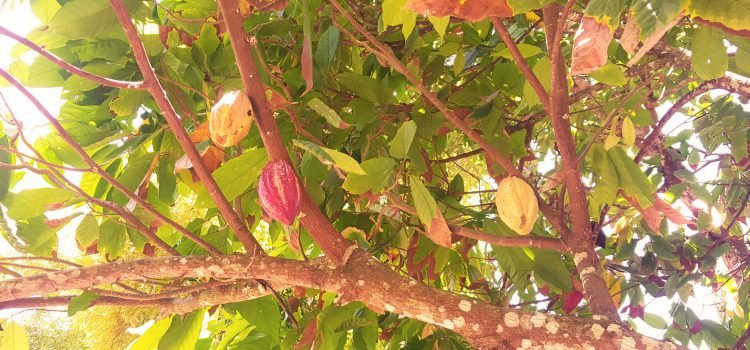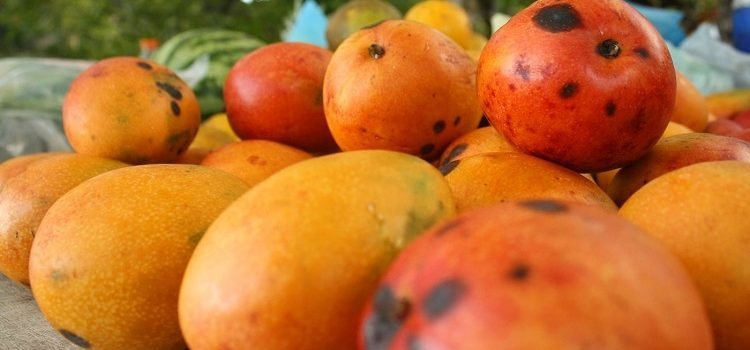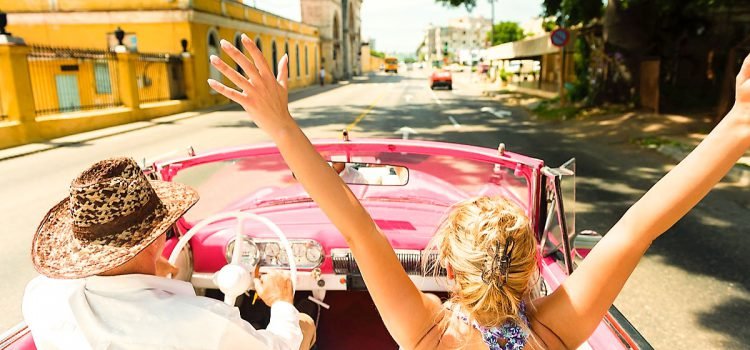Cocoa, characteristic fruit of the island of Cuba.
Cocoa, a tropical plant from America, whose fruit receives the same name has become an essential food for all people due to its aroma and flavor.
Its fruit is usually used to make chocolate, since cocoa powder and butter are obtained from it, both when mixed with sugar give rise to different types of chocolate.
Read on, to learn more about this important topic.
Aspects to be treated:
- What are the origins of cocoa?
- When does Cocoa appear on the island of Cuba?
- Interesting facts about Cocoa:
Culture
Tree and Fruit
- How is Chocolate processed?
- What types of Chocolate exist?
- Is there a place on the island dedicated only to the sowing of cocoa?
What are the origins of cocoa?

According to historians, the appearance of Cocoa dates back to times as old as 800-1100 years before Christ, a product of evidence found in artistic manifestations such as sculptures, murals, bowls and vessels.
A sample of his presence was the finding of his hieroglyph in many containers, deciphered as ka-ka-wa in the form of fish.
The oldest was found in a Mayan burial in Guatemala in 1984, it is known as Río Azul vessel and dates back to 500 AD. C. s.
They have been the object of imagination in various Aztec paintings, where they were represented as tributes to the emperor and offerings to the dead.
When does Cocoa appear on the island of Cuba?
Already by 1492 with the arrival of the conquerors on Cuban shores, the inhabitants knew and dominated the cultivation of cocoa.
They even offered their deities their fruit and drank chocolate in rituals performed to name children, at weddings or funerals.
Extending the novelty to other regions of the world, chocolate became one of the delicacies of preference for figures such as María Teresa, wife of Luis XIV.
Over time, cocoa spread to the city of Baracoa, today the chocolate queen on the island due to its favorable climatic conditions and soil richness.
It is currently the producer of 75 percent of national cocoa.
It has a chocolate and powder chocolate factory, which has undergone several modernizations since its foundation in 1963.
Interesting facts about Cocoa:
- Culture:
Cocoa began to be grown in small plots, until the mid-twentieth century that began to promote some species of bitter taste and low quality.
But in 1956 the situation began to change.
Research began to begin to improve plantations with the introduction of clones and hybrids from Costa Rica.
Already by 1959 with the triumph of the Revolution these works accelerated and new technologies began to appear for the benefit of cocoa crops.
One of them was the creation of several banks with a high genetic level that made plants and producers of a superior quality fruit more resistant.
- Tree and Fruit:

The strange-looking tree that yields cocoa, is called Theobroma cacao, which in Greek means cocoa food of the gods, more than 200 years ago by the great botanist Carolus Linnaeus.
These trees grow only in the regions located in a strip of more or less 20 degrees around the line of Ecuador.
Violet red pods when tender and yellow when ripe, contain cocoa beans that grow directly on the tree trunk.
When opening the pods we find between 30 and 40 seeds, similar to almonds, covered with a pale yellow flesh, citrus flavor.

They contain among its components sugar, water and tannin, which is processed to obtain wines, vinegar and alcohols.
Another curiosity about the seeds of the fruit of the cocoa is that from its cover feed is manufactured and from the clean almond cocoa fat and other components are extracted.
However, from the shell of the fruits, organic matter is manufactured that improves soil conditions.
The plant that originates by means of seeds is of erect growth and can reach a height of five meters, the one born by stake is of open foliage and of smaller size.
How is Chocolate processed?
The process of making chocolate begins once the growers have collected the fruits of the cocoa, and open them by hitting with a machete to remove the beans.
The fruits are cut at their optimum moment of maturity, which is noted by the color and sound of the fruit when struck.
This harvesting process is essential for obtaining good quality grain.
Then the fresh grains are left to ferment in drawers at room temperature between 2 and 8 days.

In order to obtain grains in optimal conditions of flavor and aroma.
To do this, the grains are piled up and covered with banana leaves.
In the process the elimination of the mucilage that covers the almonds and the death of the embryo that is inside them occurs.
Once fermented, raw cocoa still contains 60% moisture, which should be reduced to 7%.
To do this, the beans spread on the ground exposing them to the sun.

This process will take a week although it can reach two or more depending on the ambient temperature of the place.
Once dried and cleaned, they are packed in jute or paper bags of about sixty kilos and stored under certain conditions of temperature and humidity.
After this process, the cocoa beans are sent to the chocolate manufacturers where they will finish the production process.
When the seeds arrive at their destination, they are roasted to help develop all their aromatic and flavor qualities.
The roasting is done at about 120-170 ° C and can last up to an hour depending on the size of the pimples or if they have been deprived of the skin.
Roasted cocoa beans are split and passed through steel rollers several times to remove the peel and be thin enough.
The pressure and friction produce a smooth but thick liquid mixture called cocoa liquor that will serve, either to make chocolate, or to make cocoa powder.
This paste is stored in the form of semi-solid cakes.
From here, cocoa paste can take several paths depending on its use.
To obtain the cocoa butter, the cocoa liquor is passed through a filter where the cocoa particles that are later used to make cocoa powder are retained.
This process helps eliminate acidity and bitterness typical of cocoa.
In the case of chocolate, unfiltered liquor is used.
In the kneader the ingredients are mixed and kneaded: cocoa paste, cocoa butter, sugar.
After this a homogeneous paste is obtained, prepared to pass again through the mill.

Which takes place in the refiner, where the size of all solid particles, especially cocoa and sugar, is reduced to about 25 microns.
Subsequently, in machines called shells, between 1,000 and 6,000 kg of chocolate dough are normally heated at a temperature of 80 ° C.
In this phase caramelization reactions occur.
For a period that oscillates between one and three days, the chocolate dough is refined in the shells, at a temperature between 50 ° C and 60 ° C.
To obtain adequate crystallization of cocoa butter, tempering is performed.
It consists in reducing the temperature of the chocolate by guaranteeing the crystallization of a minimum amount of butter in crystals of the stable type, while the crystals of the unstable type are ready to be molded.
Then it is reheated without exceeding 35 ° C.
At this time the chocolate is about to be molded.
In the molding process, the liquid mass of cocoa is poured into molds
And once the process is finished the final products are taken to the packaging machines and wrapped in aluminum foil.
Subsequently, individual packaging is carried out and the products are put in boxes and pallets.
What types of Chocolate exist?
- Dark chocolate.
- Chocolate with nuts or cereals
- Chocolate with fruits
- Milk chocolate.
- White chocolate.
- Liquid chocolate.
Is there a place on the island dedicated only to the sowing of cocoa?
Yes, one of them is the Cocoa Trail.

It is accessed from the country restaurant Finca Duaba, belonging to the Gaviota S.A. Tourism Group. in Villa Gaviota Baracoa.
It is the first cocoa trail in America. It has the cocoa house and other proposals to quench the thirst of people interested in the important and delicious product that is part of the local culture.
The most exquisite Tropical fruits you can try on your trip to Cuba.
Undoubtedly, fruits constituted millions of years ago the first food of the ho for subsistence, when he had not yet learned to cultivate the land and took what nature offered for free. Over time he gained knowledge and began to expand them throughout the world, but Cuban fruits are unquestionably the most coveted.
Not only for its nutritional value but also for its exquisite flavor and aroma. There are many that are used for industrial purposes, that is, in cosmetics, pharmacology and food. If you plan to travel to Cuba, read on, so you can learn more about typical Cuban fruits.
TYPICAL CUBAN FRUITS
- The banana.
- The coconut.
-
The Mango.
-
The melon.
-
Papaya.
-
The mamey.
-
The maracuyá.
-
The Grapefruit.
The Cuban Banana

Banana, or banana, was probably one of the first species that spread spontaneously and one of the first to be cultivated.
Although it is originally from India, it adapted very easily in many countries of tropical America.
Being one of the highly esteemed fruits in Europe to where a large export flows.
The Cuba Banana can be used in different ways:
- Whether as a dessert fruit, served whole and using the peel to hold it without the hands coming into contact with the pulp directly.
- In pieces it is incorporated into fruit salads, jellies and other desserts, as well as smoothies and other drinks.
- Due to its high energy intake and its high potassium content, it is often consumed among athletes and bodybuilders.
- Cooked, it is used as an accompaniment for some meats in tropical recipes, as well as in Cuban rice.
- With brown sugar, lemon juice or vinegar and spices, sauces or jams are prepared, sometimes very spicy.
- They are used to prepare mash, a very frequent food for children.
- Another way to consume them is cooked, that is, ripe bananas are fried in butter or oil.
- In the form of tostones (mashed and fried banana slices) they are served to accompany meats.
Cuban Coconut
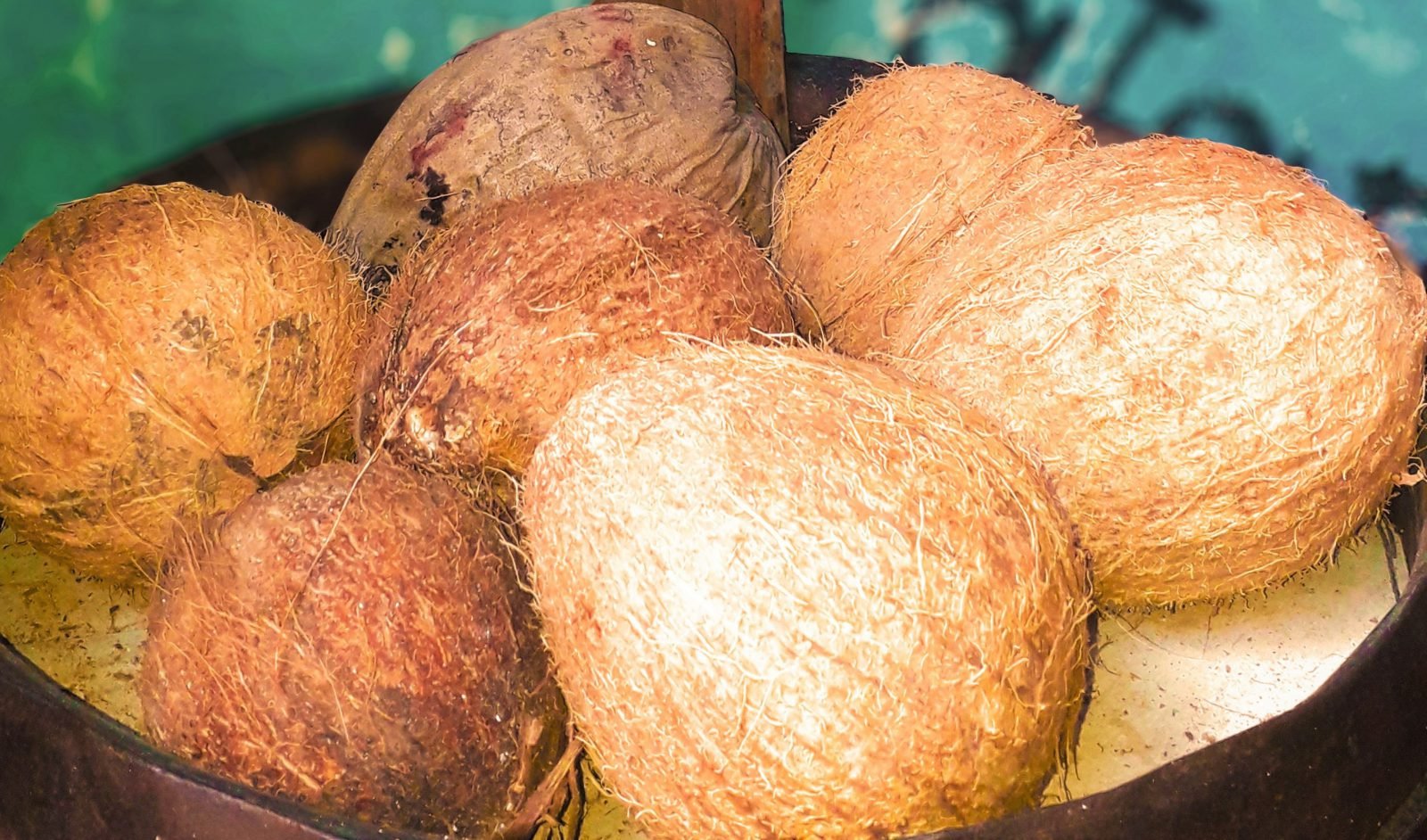
It is an edible fruit obtained from the coconut palm, the most cultivated palm in the world.
In Cuba they grow in some places, especially in coasts and beaches, giving the landscape a special attraction, as in other Caribbean islands.
It is characterized by having a juicy pulp and an exquisite water inside, the presence of it is checked by mild agitation.
Due to its pleasant and refreshing taste, different uses have been attributed to it:
- In cosmetic products or in pharmacies, for the great fat and coconut oil it has.
- In many places they are used to drink the liquid it contains – coconut water – poured into a container or, more commonly drink it from the coconut itself.
- Used in diseases for its excellent medicinal properties.
- It is useful for making saoco, a typically tropical and Cuban drink, which is prepared with coconut water, combined with brandy.
- Coconut oil is used to make some packaged industrial confectionery products.
Cuban Mango
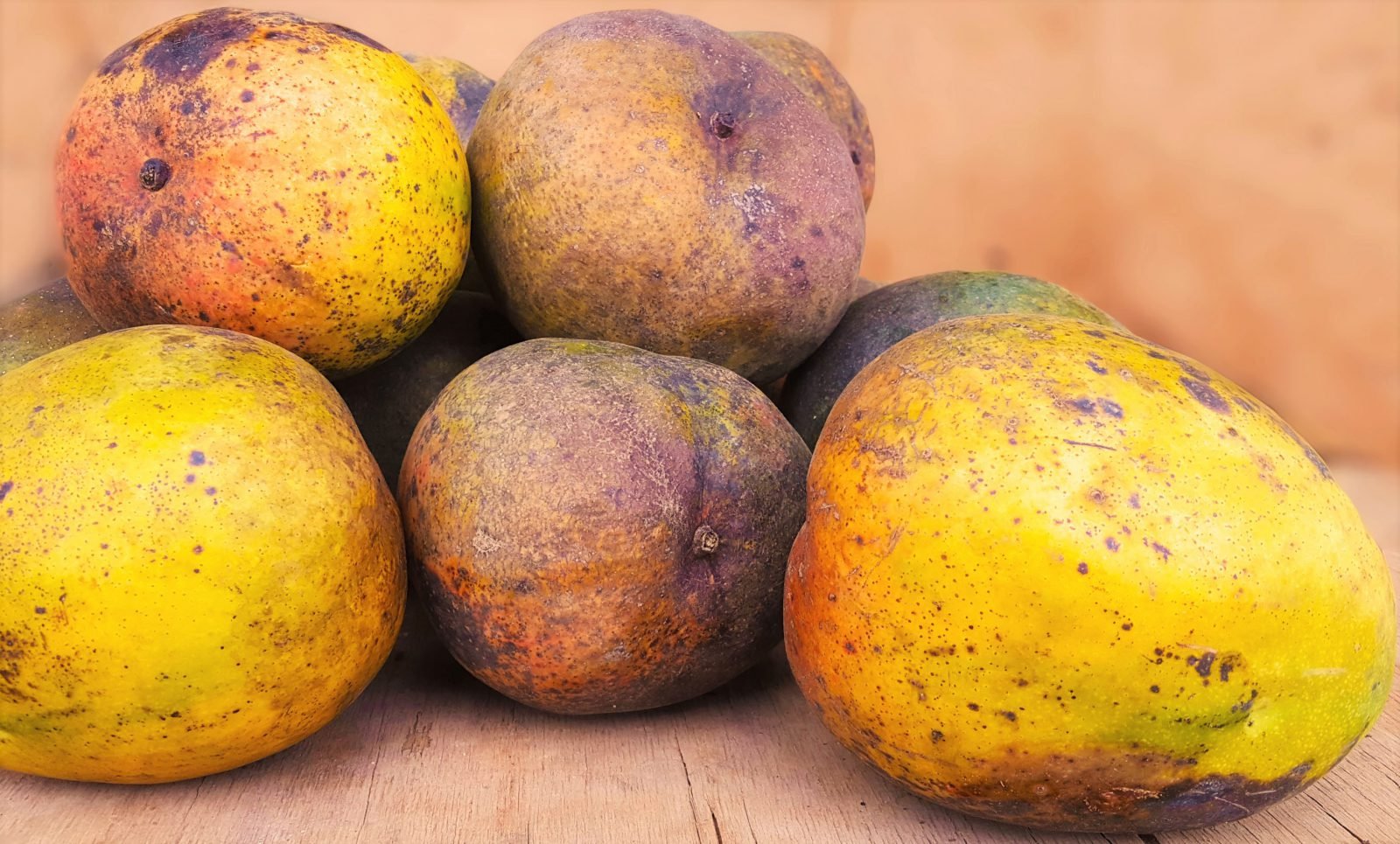
Mango is recognized as one of the best and most delicate fruits in the world.
Not only for its colorful appeal, and exquisite flavor but also for its nutritional values:
- It provides a significant amount of carbohydrates so its caloric value is high.
- It is rich in magnesium and as for vitamins it is rich in provitamin A and C; Both vitamins also have an antioxidant effect.
Apparently it is native to northwestern India and northern Burma on the slopes of the Himalayas and possibly also Ceylon.
But it was not until the year 1793 that the first mango seeds from Jamaica landed through the port of Havana that were sown on the farms outside the walls, in the lands of the Counts of Jibacoa, where Galiano Avenue is today.
From there they spread throughout the island, although it is not ruled out that from Jamaica more seeds have arrived to the east.
Hence, it is impossible to believe that about 200 years ago in Cuba there was not a single tree of the exquisite fruit when today there is a large amount.
Forms of employment od Cuban Mango:
- The pulp that is obtained is used in the elaboration of concentrated puree, compotes, nectar and jams, destined for export, tourism and the national market.
- Much of the crushed mango is used in the manufacture of mash in aseptic bags for shipping to European countries, where it has gained great prestige for its quality.
The Cuban Watermelon
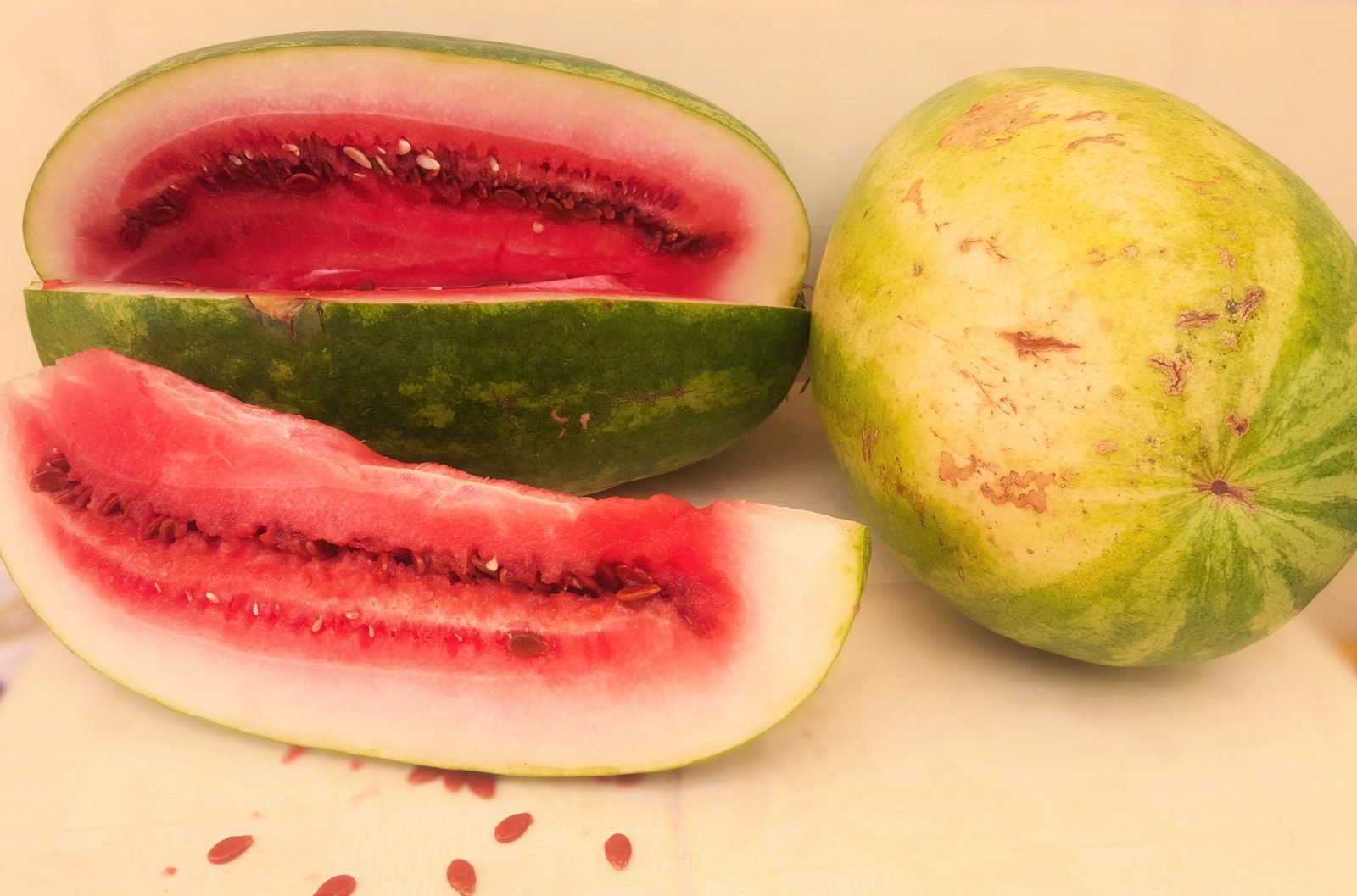
Melon or watermelon comes from tropical Africa.
It is a spherical fruit, fragrant and highly esteemed for its pleasant and characteristic flavor.
Its quality depends on the color, juicy content and cultivation mode; but there is no doubt that it is necessary to open it and try it.
Among its nutritional properties are: the amount of minerals it provides such as potassium, magnesium, calcium, and sodium; and 80% of its composition is water.
Hence it is an ideal moisturizer, so it can be consumed in the desired amount without fear of ingesting excess calories or sugars.
It is a diuretic fruit par excellence, and therefore recommended for those who suffer from high blood pressure or blood vessel conditions.
The ways to consume the melon are very varied:
- The most common way to consume it is in its natural state.
- Also in both sweet and savory preparations.
- It is ideal for making compotes, jams, creams, and preparing.
Cuban Papaya or “Frutabomba”
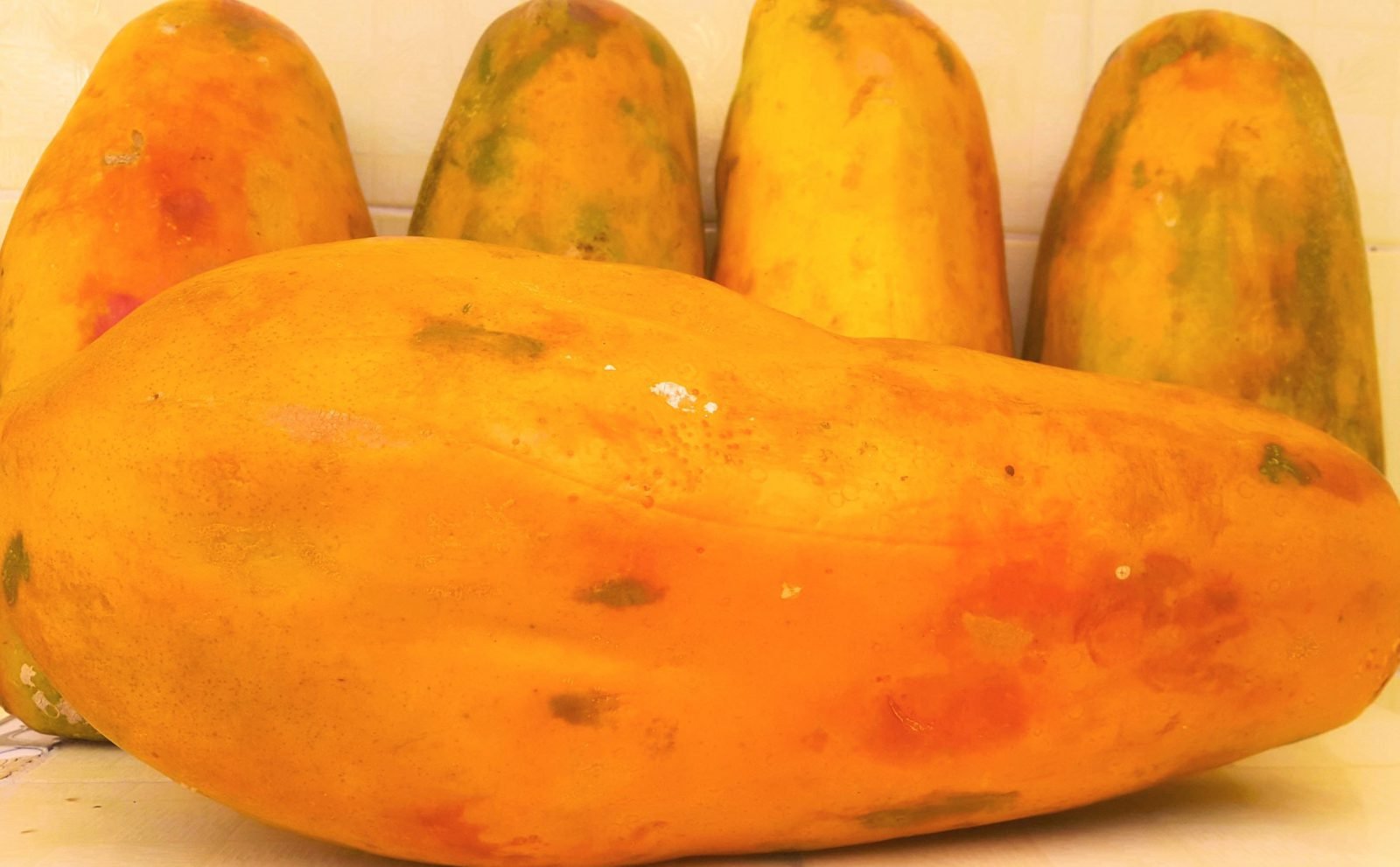
Native to tropical America, its fruit is similar to that of melon.
Among the properties it presents are the following:
- It constitutes a good diuretic (water) for presenting 90 percent of water.
- Increase natural defenses (vitamin C), that is, 100 grams of food cover one hundred percent of the daily recommended amount for an average adult.It provides even more vitamin C than orange!
- It improves skin health (vitamin A) as it covers 25 percent of the recommended daily amount of this nutrient for an average adult.
- Cardiovascular disease prevention
- Restores the acid-base balance of the body as it contains minerals such as calcium, magnesium, potassium and phosphorus.
You should be careful with the way you use the word “Papaya” in Cuba, as it also refers to the intimate parts of women.
El Mamey
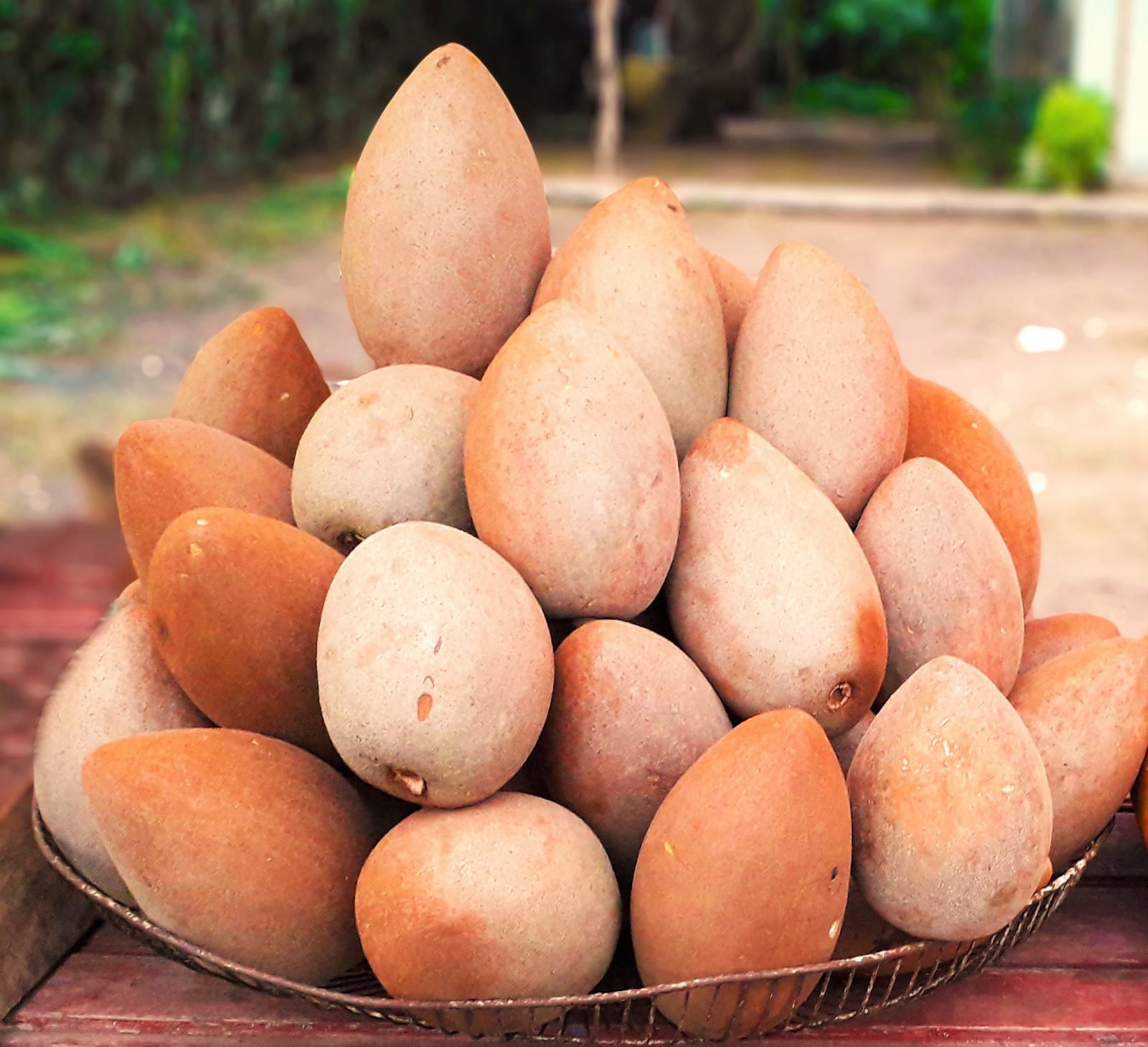
One of the most delicious fruits on the palate is the mamey, its most exact origin is in Mesoamerica.
It is one of the most beautiful and appreciated fruits of tropical flora, its thick red mass is very sweet and aromatic.
There is another variety, called mamey de Santo Domingo, with yellow flesh, sweet and very pleasant.
Its flavor is sweet, with a delicious orange pulp turning reddish and with a seed of about 10 centimeters dark brown or black.
The use of the Cuban Mamey is very varied:
- Mamey can be eaten raw as a fruit, or also in ice cream, smoothie.
- It can also be found in jam or in the form of jelly.
- It is usually used as an aphrodisiac.
- The seed in the form of oil – sapayul oil, is also used in beauty products.
- It is ideal to stop bleeding from wounds due to tannin (substance that is extracted from the bark of trees), contained in its leaves.
The Maracuyá
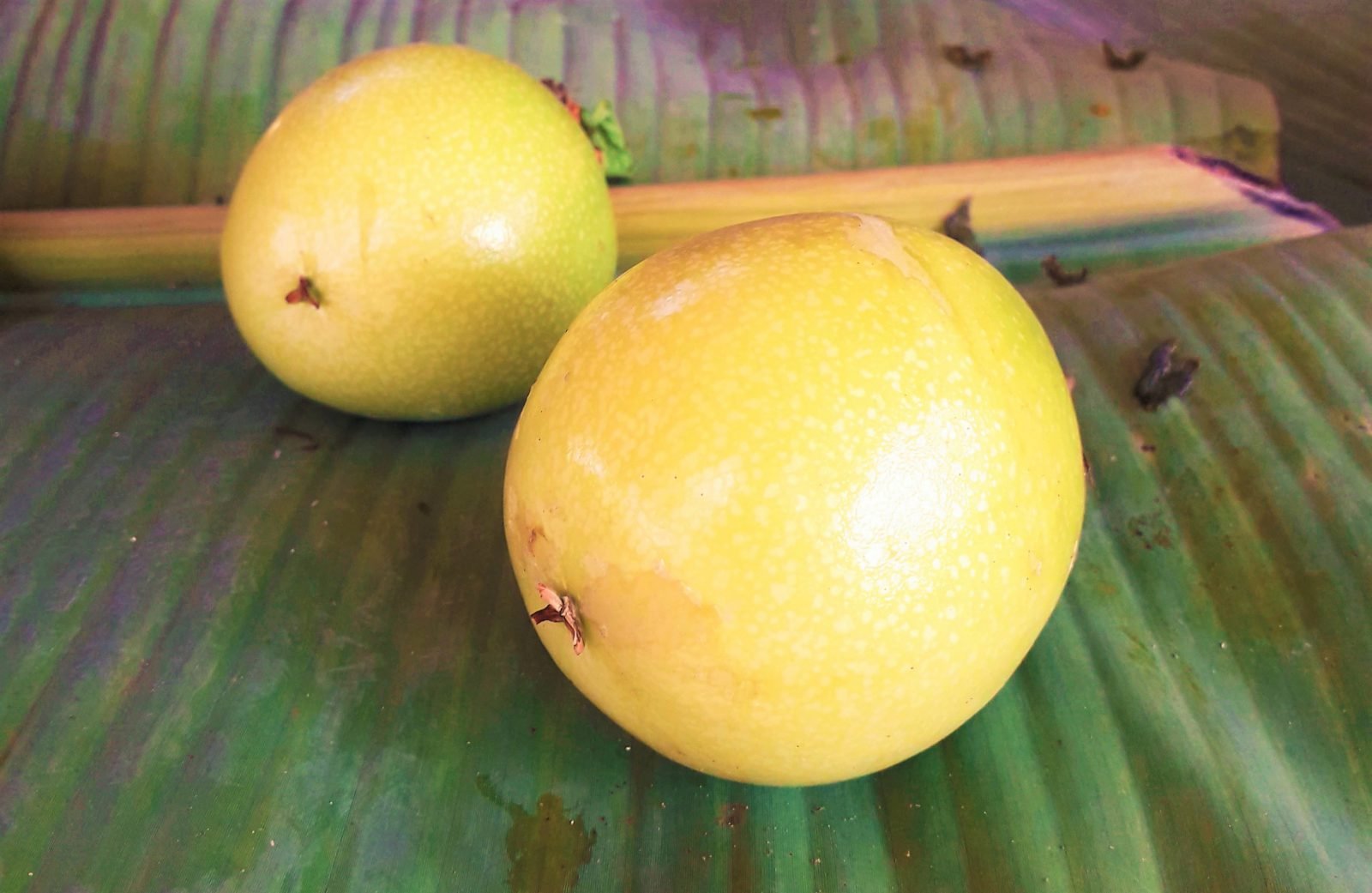 It is an oval, hard-shell fruit that contains seeds.
It is an oval, hard-shell fruit that contains seeds.
Some of the benefits offered by this food are:
- Reduces muscle and headaches and relieves the body fighting stress and insomnia.
- Eliminates cough and respiratory problems.
- It provides the body with vitamins A and C and the B complex, as well as potassium, phosphorus and magnesium.
- It is ideal for constipation due to its high fiber content.
- It helps to lose weight and take care of the line.
- It helps strengthen the immune system.
- Its seeds have an oil that help contribute to skin care.
The Grapefruit
 It is a citrus native to Southeast Asia, but its cultivation has been spreading to countries such as Israel, Caribbean islands, Mediterranean countries and to states such as Florida and California in the United States.
It is a citrus native to Southeast Asia, but its cultivation has been spreading to countries such as Israel, Caribbean islands, Mediterranean countries and to states such as Florida and California in the United States.
Its shape is like that of an orange, but larger and is yellow like lemon, although there are varieties of colors.
Its taste is somewhat bitter, although they can be sweet, both very pleasant to the palate.
They are tasty by themselves or by adding them to any fruit or green salad.
They are also a delicious and unique ingredient in sauces
It contains 32 calories per 100 grams and 90% water.
Among its medicinal uses are:
- It exerts a diuretic effect, being ideal in situations of heart failure and hypertension due to its low sodium intake and its high potassium content
- Its high content of vitamin C is beneficial in cases of infections, since this vitamin stimulates the functions of the immune system.
- Its habitual consumption prevents cancer thanks to the excellent combination of limonoids, vitamin C and pectin.
The worst mistake you can make is to visit Cuba and not taste a delicious Cuban rum.
One of the things that you can not stop doing in your visit to Cuba is to enjoy the sweet, dry, and aged aroma of Cuban rum.
Drink born of sugar cane that over time has reached a privileged place in the economic and tourist gear of the island, and from which famous cocktails like Cuba Libre, Mojito and Daiquiri came to life.
It condenses the history, culture and the true essence of the Cuban. Hence, it is preferred by everyone who visits the island.
Read on to learn more about Cuban Rums.
Aspects related to the topic:
- What is the history of Cuban rums?
- What is the secret of the quality of Cuban rum?
- What types of Cuban rums are there?
- Where to buy these Cuban rums?
- What should be taken into account when choosing a certain rum?
What is the history of Cuban rums?
Cuba’s rum and history are inseparable.
Their relationship began with the introduction of sugarcane by Christopher Columbus in the first years of his arrival in Cuba, his growth was mainly due to the tropical climate present on the island and the fertility of the soil.
And once grown the Spaniards used to produce a fermented called tafia, the ancestor of the rum that we know today.
The idyll lasted little: fearing that Spanish products lost their place in the market, the Crown prohibited the production of distillates in Cuba.
It was four centuries later (in 1800) that Pedro Diago -considered the father of the rum- introduced the copper stills and the idea of ??aging the brandy in wooden jars.
This is how a lighter rum called ‘superior rum’ came into being, with a refined taste (more subtle and caramelized alcoholic beating) that was popularized in the Spanish court and in the British colonies.
But this also did not last forever.
One hundred years later, many of the distilleries closed or moved after the revolution, as a result of the trade blockade that the United States imposed on Cuban products.
At this time only a couple of the distilleries remained: Legendary and Havana Club.
The second, above all, adopted the mission of defending the fame and quality of Cuban rum in the world.
And so they became very famous on the island.
What is the secret of the quality of Cuban rum?
 Behind the secrets of Cuban rum, there is a man essential, the master, master and master of the winery, Master Ronero.
Behind the secrets of Cuban rum, there is a man essential, the master, master and master of the winery, Master Ronero.
On one occasion, speaking as the First Master Ronero of Havana Club, José Navarro, he told us about his work and stated that in Cuban rum there was no secret in its manufacture.
Its quality is not due to a well-kept formula, only to “a culture inherited and transmitted from generation to generation, from Cuban to Cuban, from heart to heart …”.
What types of Cuban rums are there?
Today, in the international market, more and more prestigious rum brands of Cuban origin are bursting with increasing intensity, which stand out for their quality thanks to exquisite products, among which are:
-
Havana Club:

Distributed by the French company Pernod-Ricard, the Havana Club brand is considered the best-known Cuban rum in the world and the main “raw material” of Cuba’s rich cocktail bar.
This brand has kept alive the art of aging. It is marketed on the entire planet.
Its emblem is La Giraldilla, a statuette also the symbol of the city of Havana.
It has a wide arsenal among the best known are:
- Havana Club 3 Years widely used in the preparation of Cuban cocktails (Cuba Libre, Piña Colada, Mojito, Daiquiri, among others);
- Havana Club Special, Havana Club 7 Years;
- Havana Club Teacher Selection;
- Havana Club 15 Years and
- Havana Club Máximo (the most expensive manufactured by the brand so far).
2. Santiago de Cuba:

It is one of the oldest since it has a century and a half of creation and It belongs to the cradle of light rum par excellence and constitutes one of the most elitist and exclusive brands of Cuba.
It was the Bacardi rum factory before the Cuban revolution, intervened by the government in the first years; hence the conflicts that do not seem to reach the end between both brands.
In Cuba by seasons it is easy to find the Santiago de Cuba (white) but it is really difficult to find the Santiago de Cuba Añejo (dark)
THERE IF YOU FIND IT through the streets during your visit to the island do not hesitate to buy it, you will not regret .
The Santiago de Cuba 500 rum is one of the most exclusive spirits of the Corporación Cuba Ron S.A and Cuban rum in general.
This Rum, produced exclusively in the Ronera of Santiago de Cuba was registered as a Three-dimensional Mark in the trademark registration of the Intellectual Property Office of the European Union.
3. Legendary:
This brand was founded in 1946 and offers merchandise elaborated in the old style with the use of American oak barrels, the use of silica sand or the filtering from the double bottom of the tanks.
This line is somewhat sweeter compared to other types of rum in Cuba.
Among the most popular is the Legendary Elixir, which is similar to a liqueur although it does not stop being rum and the Legendary 7 Years equally exquisite.
4. Cubay:

This Cuban Rum, in the modality of Extra White White Card, has been awarded in international events, even in blind tastings where it has been successful as best White Rum, best Golden Rum and Premium Rum, first quality.
5. Mulata:
It is a mixture of spirits, demineralised water and additives, but its main ingredient is sugarcane whose rigorous selection has an impact on the optimum quality of the molasses.
Its manufacturer is Tecnoazúcar.
It constitutes another important line of rum, among them the Mulata Añejo 15 years.
6. Pearl of the North:

It is one of the youngest lines of rum on the island but paradoxically it is manufactured in one of the oldest rum factories in Cuba, the popularly known “Arrechavala” family name to which he belonged until the first years of the Cuban revolution when the factory was nationalized.
This famous rum factory for some years served as a refinery for Havana Club rum.
It is located in Cárdenas just 15 minutes from Varadero.
7. Arecha:
Founded in the 19th century, it accumulates the expertise of the best rum masters.
They maintain a tradition to elaborate it that dates back more than 80 years and still continues in force.
It also has a unique flavor from the region of the country where it is produced.
8. Edmundo Dantes:
Marked by the exclusivity and excellence of this drink native to eastern Cuba, only three thousand bottles are produced annually.
It leaves the palate a light vanilla taste and has a golden color that puts it on the list of the most appreciated rum industry products in the world.
9. Caney:
Also elaborated to the archaic method, it has its base in the sugar cane with the unique flavor of the eastern lands that gives rise to an unparalleled drink.
It is most popular in the eastern region of the country.
Where to buy these Cuban rums?
If you want to buy Cuban rums, you can go to any store in Havana and ask, usually there is always.
Another place, La Casa del Ron in Varadero, not only offers different varieties of Cuban rum, but also combines the pleasure of tasting good liquor with history.

What should be taken into account when choosing a certain rum?
There are many variants of rum: white, golden, aged, black, fruity, premium … and each of them has its peculiarities.
1. Ron Blanco
It is the most popular of all and due to the neutrality in its flavor, it is ideal to combine with soft drink, mineral water or fruit juice, which makes it the favorite of many when preparing a good cocktail or a refreshing mojito.
2. Golden Ron
Its flavor is usually stronger and more penetrating, which is why many experts use it to prepare a good free Cuba.
3. Ron Añejo
The aged rum is a little stronger and its flavors are more complex. When it is a good aged rum, it is recommended to take it alone, with an ice or a little mineral water.
4. Black Rum
Its time of aging in barrels is usually greater, hence the color so dark it acquires.
For many it is the rum that has more flavor, so it is recommended to take it alone, with a little water or a few drops of lemon.
5. Ron Gran Reserva or Premium
His name says it all.
It usually has a lot of character and at the same time softness.
The experts consider that this type of rums should never be mixed, since the elaboration of a rum of this quality has a special aging in reserved barrels of each distilling house.
:
Cuban Habanos, something that you should taste in your visit to Cuba.
Cuba is not only recognized worldwide for its beautiful beaches, for its colonial architecture, for the exquisiteness of its cocktails but also for the freshness and quality of its tobacco.
This is because it has the best technique to prepare cigars, and its texture, aroma and taste are unique among many, so they meet the standard for the most refined tastes in the world.
Hence, they are considered without discussion as the best of their kind on the planet and claimed by the most demanding markets, mainly due to an increasing quality and novelty.
If you are a lover of Cuban cigars, read on, I can guarantee that you will find very curious data that you probably did not know.
Data to be treated:
- How did the Habano in Cuba?
- What are the best brands of cigars in Cuba?
- How to recognize the authenticity of the Habano?
- What should be taken into account when choosing a Cuban Habano?
- How to make the cut to a Cuban Habano?
- Where to buy Habanos in Cuba?
- What are the prices of Cuban Habanos?
- How to preserve the Habanos?
How did the Habano in Cuba?
Tells the story that tobacco arrived in Cuba by the year three thousand before our era.
It is also said that our aborigines, mostly composed of the so-called Indian Taíno, gave the plant healing properties and a role determinant in social, political and religious ceremonies.
Then with colonization, the tobacco plant spread throughout the world, instantly unleashing a strong passion for it. Spain quickly figured among the countries with the highest number of followers.
Later it spread to other parts of Europe, where the most serious sanctions against tobacco were established.
The first factories of the cigar appeared in 1676 in Spain and by 1731 the factories of the royal cigars had been established there.
Italian ports in Venice and Genoa became key points for transporting cigars to central Europe and Russia.
During this period, the leaf grown in Cuba was being transported to Spain to become pure. When they realized that the cigars of Havana survived the transatlantic trip much better than the leaf itself, cigar factories were born in Cuba.
Tobacco intensified its value.
What are the best brands of cigars in Cuba?
-
Partagas
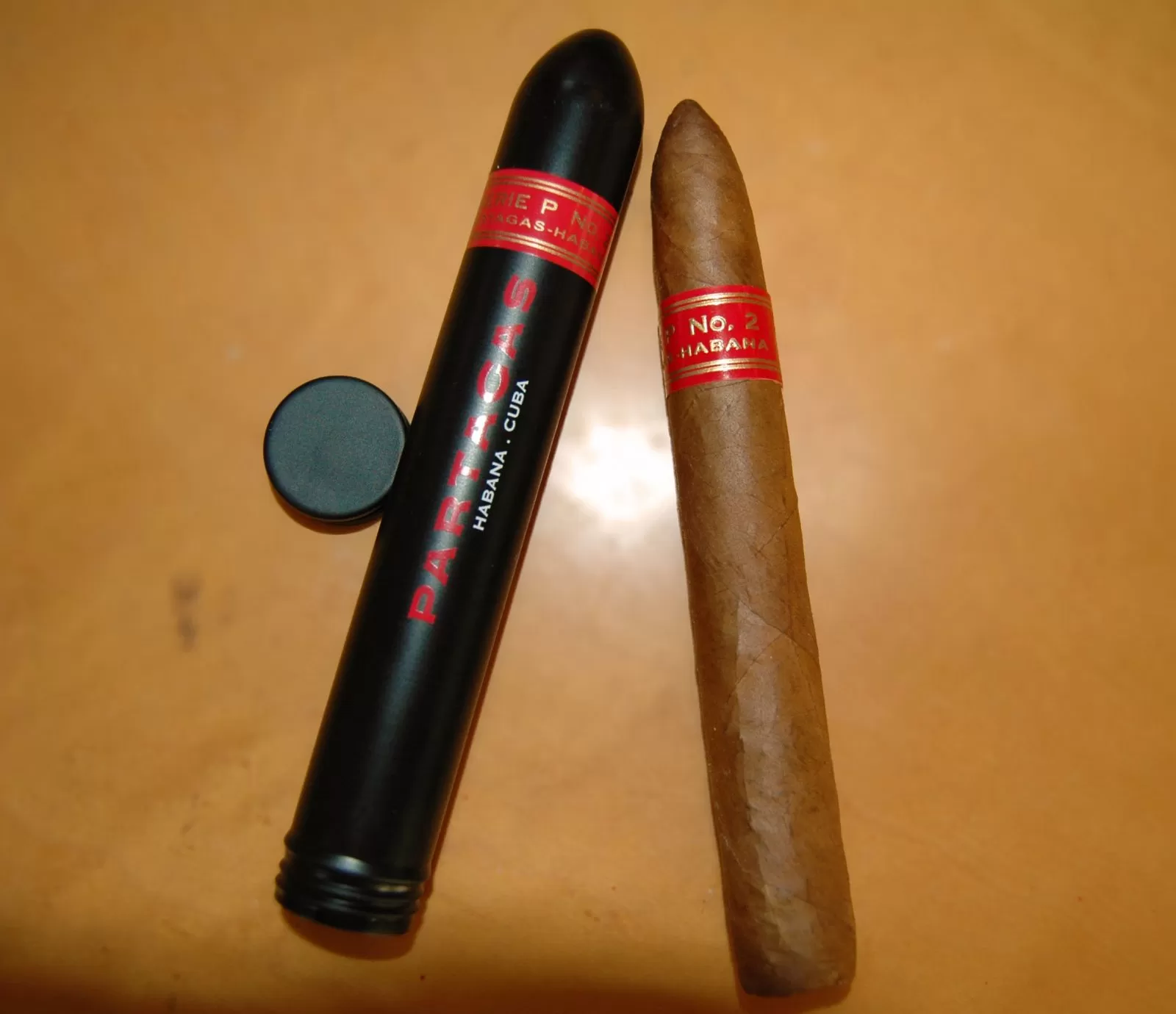
Partagas was announced in 1845 by its creator Jaime Partagás.
It is a brand of Cuban cigars that belongs to the national company Habanos S.A. administered by the Cuban state for the production and commercialization of tobacco in the region.
It is recognized for its fine cigars, without doubt the size of many, also recognized worldwide.
In any of its presentations, the layer of Partagas cigars is generally light colored.
-
Cohiba

Cohiba became known in Cuba for the year 1966, and since then it has remained among the favorites by many.
It is a brand of cigars made in the region ‘Vuelta Abajo’, has the best vitolario in the world and is characterized by its great strength and the flavor of cigars.
He has obtained great recognition and the best scores in international competitions.
-
Punch
It is another of the great brands of Cuban tobacco, which has great international prestige and is one of the most traditional and ancient in Cuba. Its quality and presence make it one of the most sought after in the old continent, especially in the United Kingdom.
-
Montecristo

It has its beginnings in Cuba for the thirties.
They are characterized by being strong cigars, with a dark Carmelite layer and with a great strength present in their traditional formats.
It is one of the best brands of cigars in Cuba, and the one that sells the most, especially the No. 4, and are characterized by having a somewhat spicy flavor.
-
H. Upmann
It is one of the oldest cigar brands in Cuba founded by the brothers August and Hernan Hupmann, in 1844, and for years they have maintained the tradition of creating cigars of the best quality internationally.
At present, it has two factories: one in Cuba and another in the Dominican Republic, to serve the North American market.
It is easily recognized by its particular smell that conceals a mixture that for many experts is the best.
-
Romeo and Julieta
This brand has its beginnings for 1878.
It became known worldwide for the twentieth century, has a somewhat classic flavor, especially because it has a very distinctive aroma that is mixed with the leaves of gut and cloak.
They are globally recognized for being a quality brand.
How to recognize the authenticity of the Habano?

Check the Guarantee Seal or label that the box has, it will always be located on the upper left side, approximately in the middle of the shield, subtracting 3 or 6 mm at the edge of the housing.
Take a good look at the silkscreen of the vitola, the fakes of homemade printers are quite good but, if you look closely, the authentic vitolas have to match the pattern of the serigraphy with the relief.
This element is important, since it has 2 security conditions, to guarantee that you obtain legitimate Habanos.
The first is that it is made on special synthetic paper, with numerous characteristics that make it unique and with protection against photocopies or scans.
And the second is that it has a unique barcode for each box.
What should be taken into account when choosing a Cuban Habanos?
All five senses are required when choosing a Habano.
The coat should please the eye. You may prefer a light color or perhaps a ripe or dark one.
Either way, the color should be uniform throughout the Habano and the layer sheet should have some luster.
If you notice any white or green spots, these are natural effects, which appeared during the growth or healing processes.
None of them affects the quality of the Habano.
Touch the Habano gently, pressing it lightly between your thumb and forefinger to verify its condition.
You should notice it firm but not hard to touch it.
Enjoy the aromas that always constitute a foretaste of the flavors that you will later enjoy.
Flavor can only be assessed when smoking.
How to make the cut to a Cuban Habano?
The cut should be made just above the line where the cap joins the layer.
In order to create an opening wide enough to ensure a proper shot, while ensuring that a part of the knob remains, to prevent the layer from falling off.
There are several instruments that can perform the cut.
It is usually used a guillotine with one or two leaves.

There are also special scissors for Habanos.
Another is the die (or bullet) cutter with its circular blade: it removes a section of the Habano knob, and has the advantage of preserving the shape of that knob although it has several limitations, as in the case of figured Habanos .
Where to buy Habanos in Cuba?
When you are visiting the island, and you want to taste a quality Habano, you should buy it only in official stores.
Otherwise you risk being cheated.
There are several places where you can buy Habanos, one of them are the official shops of the hotels.
Here you will not only find your authentic Habano but also special spaces to fully enjoy it, such as the Meliá Cohiba, Meliá Habana hotels, the Habana Libre Hotel, the National Hotel and in Santiago de Cuba, La Casa del Habano at the Meliá Hotel Santiago.
Another option is to buy in the stores that are in the city of Havana.
El Corrojo Tobacco Shop, located at the Meliá Cohiba Hotel.
“La Corona” Tobacco Factory, located in Agramonte between Colon and Refugio, Old Havana.
La Casa del Habano 520, located in the Partagás factory, Industria street # 520 e / Dragones and Barcelona, Old Havana.
What are the prices of the boxes of Cuban Habanos?
The most sold and preferred by everyone who visits the island, ranging between 90 and up to 500 dollars, depending on the brand.
- R and J (Romeo and Juliet) Exhibit No. 4 is priced at $ 90.
- Hole Epicure No. 1 (SLB) costs $ 109.
- Montecristo Special Nº2, $ 120 and Montecristo Petit EDMUNDO, $ 208.
- Juan Lopez Selectos Nº2, at the price of $ 118.
- Habano Punch Churchill can buy it at the price of $ 143.
- The Double Crowns Hole costs $ 154 and The Hoyo des Dieux Cabinet costs $ 155.
- At the price of $ 170 you can enjoy a Punch Punch SBN 25.
- The famous Partagas Series D N’4 SBN 25 has a price of $ 190.
- Bolivar Giants SBN 25, $ 250.
- Two varieties of Cohiba, the first Cohiba Siglo III costs $ 167 and the Cohiba Esplendidos Var 25, $ 490.
How to keep the Habanos?
They can be stored for up to 15 years if they are kept at a temperature between 16 and 18 degrees Celsius with a relative humidity of 65 to 70 percent.
If it gets wet it will not turn on, if it dries it will have a spicy flavor so it is advisable to have a Humidor at hand.
Humidors are the best tool to keep the cigar, it can be a box, a cabinet or even a complete room, specially designed and containing a source that generates or controls humidity.

Therefore, the temperature should be kept as constant as possible and the humidity controlled.
I hope that this small document has been useful, and remember that there is no better place than Cuba to taste an authentic Habano.
Cienfuegos, one of the cities that you can not miss while visiting Cuba.
It is impossible for us to visit Cienfuegos and not be seduced by the French spirit and the affable Caribbean style that this small city possesses.
Its environment is characterized by an urban nucleus quite homogeneous in terms of architecture, full of classic facades and slender columns that provide a Frenchified atmosphere that even in our days is perfectly preserved.
Since it is the only Cuban city that is born of parents from other countries, mostly French.
It is impossible for us to visit Cienfuegos and not be seduced by the French spirit and the affable Caribbean style that this small city possesses.
Its environment is characterized by an urban nucleus quite homogeneous in terms of architecture, full of classic facades and slender columns that provide a Frenchified atmosphere that even in our days is perfectly preserved.
Since it is the only Cuban city that is born of parents from other countries, mostly French.
Reason why it has been named as the “Pearl of the South of Cuba” and named by the famous singer Benny Moré as:
“The city that I like the most”
Read on to learn more about this beautiful city, you will not regret it.
- Where is the city of Cienfuegos located?
- At what time of the year is it better to visit Cienfuegos?
- How to get to Cienfuegos?
- In what to move once in Cienfuegos?
- What are the most interesting places to see in Cienfuegos?
- The Malecón de Cienfuegos
- Paseo del Prado
- José Martí Park
- Tomás Terry Theater
- Palace of the Valley
- Punta Gorda
- Ferrer Palace
- Tomás Acea Cemetery
- Rancho Luna Beach
- El Nicho
Where is the city of Cienfuegos located?
The city of Cienfuegos founded on April 22, 1819.

It is located in the central-southern part of Cuba, bounded on the west by the province of Matanzas, on the north by Villa Clara, on the east by Sancti Spíritus and on the south by the Caribbean Sea.
At what time of the year is it better to visit Cienfuegos?
Everything depends on your tastes.
If you want to enjoy the beach and diving, the best time is from January to April.
But if you like the party, you will prefer to go between August and September, since that is when the Benny Moré Festival and the Cienfuegos Carnival are celebrated.
How to get to Cienfuegos?
The main access to the province of Cienfuegos is the National Highway, both from Havana and the east of the country.
The Astros and Vía Azul bus lines communicate directly with Ciudad de La Habana, Trinidad, Santa Clara and Camaguey.
Both bus companies have good comfort and have good punctuality.
But because it is mainly focused on tourism, schedules and comfort are better in Viazul, which has the following schedules:
Havana – Cienfuegos, departures at 07:00 and 10:45 hrs, with arrivals at 11:35 and 16:00 hrs and a price of 20 CUC.
Cienfuegos – Havana, departures at 9:20, 11:15 and 16:05 hrs, with arrivals at 4:05, 16:45 and 20:50 hrs and a price of 20 CUC.
Another cheaper way to go from Havana to Cienfuegos is by train that costs $ 6 – $ 10 and lasts 10h 30m.
The fact that Cienfuegos is not directly on the National Highway or the Central Highway does not have direct routes to other important destinations such as Varadero, Santiago de Cuba, Holguín or Trinidad.
To travel to any of these sites or others Viazul is necessary to travel to the city of Santa Clara 67 km away.
The distance has been 86.7 miles with a duration of 2h 31m.
In what to move once in Cienfuegos?
In the city there is an excellent service of taxis always available on the street or for pickups in a certain place through the phones.
Visits to distant places (El Nicho, Dolphinarium, Rancho Luna beach, etc.) can be agreed directly with the driver and generally better prices are obtained.
What are the most interesting places to see in Cienfuegos?
- The Malecón de Cienfuegos

It is a place to fall in love, to share at night, to enjoy the sunrise and sunset of Cienfuegos.
Here it is very easy to find friends talking, families strolling, people fishing, ice cream, popcorn, rum, Cuban music, without a doubt it is one of the easiest places to meet local people.
In addition, in front of the Malecón there are several markets and coffee shops to drink and snack.
-
Paseo del Prado

When saying Paseo del Prado, you will surely think of Havana. However, also Cienfuegos has his. In fact, it is more modern, bright and extensive than the famous Paseo de la Havana.
It crosses the entire city, about 2 kilometers long, from the entrance to this city to the Cienfuegos malecón.
It is practically impossible not to go through there and not find the statue of “Benny”, without the legend reaches the ear of the observer, and not take a picture with the sculpture that immortalizes it.
This life-size statue reaching the meter eighty-two was unveiled in 2004, by the sculptor from Santiago, José Villa Somerón.
In his head, the big hat that characterized him; the long coat, the wide pants and the two-tone shoes typical of the period.
His smiling face highlights his personality and his walking position seems to invite travelers and Cienfuegos to walk around the city.
3. José Martí Park

As if from a novel of the late nineteenth and early twentieth centuries, the Park
José Martí has attractions everywhere.
Aglutina in its environment several of the most important buildings of the city and is the heart of the Historical Center and National Monument since 1982.
In fact, at the beginning of the city the José Martí Park was called Plaza de Armas and from here the first 25 blocks were drawn a:
the Cathedral Church, the Town Hall, the former Government Palace, the Tomás Terry Theater, the Spanish Casino converted into the Provincial Museum and the Ferrer Palace.
In it there are numerous monuments among which stand out that of José Martí, and the Arc de Triomphe, the only one of its kind existing in the country and that recalls the Arc de Triomphe in Paris.

The Arc de Triomphe was dedicated by the workers of Cienfuegos to the birth of the Republic of Cuba on May 20, 1902.
-
Tomás Terry Theater

On your walk through the Parque Martí, be sure to visit the Tomás Terry Theater, founded in 1890.
Located in front of this Park, on the corner of 56th Avenue and 27th Street.
With an eclectic style, its beautiful rooms in the shape of a horseshoe, its decoration and furniture, stands out as one of the most representative and refined buildings of the historical center of Cienfuegos.
Together with the Sauto theater in Matanzas and La Caridad de Santa Clara, it forms the trilogy of typical Cuban theaters of the 19th century.
5. Punta Gorda

This is one of the quietest areas of the Cienfuegos, in direct contact with the sea and the bay.
It is said that his aboriginal name was Tureira, which means close to heaven.

Here, in the nineteenth and twentieth centuries many wealthy families built their luxury mansions.
Among these great mansions, now converted into hotels, restaurants, clubs and museums, are the emblematic Hotel Jagua, the Palacio del Valle, the Blue Palace, the Green House, among many other majestic buildings.
6. Palace of the Valley

In the limits of Paseo de Prado in Cienfuegos, in the area of Punta Gorda, stands the Palacio de Valle.
Built by the Italian architect Alfredo Colli for the merchant and industrial D. Acisclo del Valle between 1913 and 1917 and at a cost of 1.5 million pesos (equivalent to 1.5 million dollars.
This luxurious mansion works as a museum and also as a restaurant specializing in seafood.
Inside you can dine in the restaurant while detailing your styles, or you can sit in the bar of its terrace and take good pictures of the bay of Cienfuegos and the city in general.
Its mixture of styles and constructive exuberance make it a jewel of eclecticism in Cuba.
7. Tomás Acea Cemetery

In the periphery of the city is the only cemetery garden of Cuba built in 1926.
Its impressive entrance imitates the Parthenon, its design was based on the American concepts of the time for this type of work.
In fact, the only one of its kind on the island, which takes advantage of the topography of the area to integrate the mortuary enclosures into the landscape.
There are many funerary monuments of great cultural value, among which are those of families and famous artists of the town, the monument of the Veterans of the War of Independence and that of the Martyrs of September 5, 1957, and the majesty and beauty of the city. place invite to a visit in which meditation has its place.
8. Ferrer Palace
At the corner of 54th and 25th streets, in the surroundings of the Martí Park in Cienfuegos, we find this amazing palace.
It is almost impossible to accept that it is a construction of the late nineteenth century and not much older. But it is true, the Ferrer Palace is a construction of the year 1892.
It stands out for its eclectic (architectural) style and today is the House of Culture of the city.
From its top you can see very beautiful views of the city.

9. Rancho Luna Beach
It is a good destination to sunbathe and relax in its warm waters.
It is located only 20 kilometers from Cienfuegos.
It has incredible sea beds, with corals and archaeological remains of invading ships and with the largest coral column in America, with 5 meters high.
10. El Nicho

It is one of the most beautiful paradises in Cuba.
Hidden among the mountains, it combines the green of the vegetation with the rivers, waterfalls and natural pesetas.
It is a wonder of nature available to the visitor.
It is part of the Laguna de Guanaroca – Yaguanabo refuge due to the amount of typical species in danger of extinction that populate it.
The Martin Fierro cave boasts the largest stalagmite in Latin America.
You can walk its paths with guides, bathe in its rivers and waterfalls and live close to nature from a virgin spot.
I hope this guide helps you to enjoy the offers of Cienfuegos to the maximum, a city that undoubtedly constitutes one of the most attractive in the country.
CLASSIC CARS IN CUBA
It is impossible for us to visit the Cuban archipelago and not be amazed by those old machines that despite the passing of years continue to circulate and capture with their beauty anyone who walks the Cuban streets.
Today, not only constitute an attraction for the tourism but a valuable treasure and heritage for the inhabitants of this beautiful island. Being an extraordinary fact to walk on objects with more than half a century, that’s a luxury!
When observing them, time recedes, it reminds many of their childhood, without doubts it is like traveling in time.
And it is at that moment when we ask ourselves
1. What is the real story of these cars so old in Cuba?
• What happened to the classic cars in Cuba once the US embargo was imposed?
• Why The Old Car Club “ A lo cubano” got this name?
• So, do not exist in Cuba authentic classic cars?
2. Will it be safe to travel in these old cars?
3. What are the classic cars that abound in Cuba?
4. Where to find a classic car once in Cuba?
5. How much should I pay for a tour over these old machines?
6. What site can I look for to rent a classic car in Cuba?
7. Data of interest
These are some of the questions that come to mind. Keep reading and you will find the answer.
What is the real story of these cars so old in Cuba?
In the year 1898, in the period of culmination of the war of 1868, Havana capital enjoyed a certain development and apogee for the simple reason of not having been directly involved in the war.
And it was there at that moment where an event happened, for some insignificant but for others transcendental, the appearance of automobiles in Cuba.
In the first decade of the twentieth century the arrival of cars from Havana from Europe did not cease, around four thousand vehicles of varied models moved their streets, all with their brands created by car manufacturers as
The Charles Berndez house, creator of the Mercedes brand, Seigle and Tolon of the Hum-mobile brand, Fausto Rodriguez of Chevrolet cars and Mack trucks, and others.
By the year 1959 this number rose to more than 190,000 cars but this did not last long, with the Triumph of the Revolution and with the subsequent arrival of Fidel Castro to power for any person it became illegal to import cars without government permission paralyzing the history of the automobile on the island.
Beginning this way the US embargo on Cuba, and therefore the stoppage of the flow of American cars and spare parts to the country.
What happened to the classic cars in Cuba once the US embargo was imposed?
As there was no organization that would agglutinate and promote them in the interests of conservation, movements began to be created among the owners of these cars until several groups emerged with the primary function of maintaining and enriching the country’s automotive heritage.
One of those groups was founded on October 4, 2003 by Alberto Gutiérrez, named: The Old Cars Club “ A lo cubano”.

Why The Old Car Club “ A lo cubano” got this name?
It received that name because most of the old cars over the years were necessarily transformed in dependence on the ability that each one had to acquire the spare parts becoming the largest and best organized group of antique cars of all the country.
It currently has an exhibition component and meets in the areas of “La Tropical”, in the vicinity of the Hotel Nacional de Cuba and the Meliá Cohiba Hotel at least once a month, while regularly organizing the Castrol Cup Rally.
Hence, sometimes, a car at first glance may seem authentic but if we look in detail we appreciate that only some retain the body, the rest has been adapted with pieces of other vehicles, rarely handmade pieces since they are not entirely safe; and they have even suffered changes in fuel.
Most work with oil in not very large quantities, an innovation made by Cuban mechanics and drivers, and a certain brotherhood arises between them with the same purpose: Keep those ancient relics standing.
So, do not exist in Cuba authentic classic cars?
Just as there are not so authentic cars, there are others that have preserved their original pieces entirely, including the interior upholstery product to the inventiveness, the persistence of its owners.
Will it be safe to travel in these old cars?
It really is very reliable to travel in classic cars.

Since they are characterized by fewer problems than modern vehicles because the best prevention is not given by the car or the presence of modern parts.
But the care and love that its owners have, the driving style and especially the skills of the driver, not only the skills as a driver but also the skills as a mechanic, professions that Cubans have had to learn and exercise, some by obligation and others by passion.
In addition, as a result of Cuban laws, all cars, whether classic or modern, are examined before being used as public transport and once on the road they are undergoing technical inspections to check whether the address, the parking brake (emergency), the lights, the engine or everything related to the mechanics of these are in good condition.
These operations are executed and oriented by state government inspectors, the Ministry of Transport and the National Traffic Directorate as part of the accident response system.
Being authorized to handle only those people capable of complying with the requirements of an excellent driver, and that is when the authorization is granted (license) to be able to transit the Cuban streets.
What are the oldest cars that abound in Cuba?
Although there is no doubt that there is a wide range of cars, such as Jeep Willy, Jaguar or Dodge, Cadillac, Pontiac, all with their peculiarities, the 2 mentioned above are the most circulating in the streets, from one place to another, calling the tension of all those who stumble on their journey.
According to studies it was shown that in the year 1959 24 percent of the cars that had been bought were American Chevrolet brand, existing a lot of Bel Airs.
In second place, the Ford with 13 percent, which are considered more reliable, arrived in Cuba before Fidel Castro took office.
And, in a third place, the Buick’s stood up, being the main cause of their preservation, not entirely authentic, for the reasons stated, but with the capacity to resist death and not allow themselves to be overcome by time.

Where to find a classic car once in Cuba?
In Havana the classic cars are concentrated next to the Capitol, where Obispo Street ends, near the Central Park or on the Avenue Puerto.
Key points for tourists or in the vicinity of the National Hotel on Saturday afternoons where the owners of classics usually come together to show off their cars.
In Varadero, it can be located more frequently on street 42, first avenue, Park Ocho Mil Taquillas or on street 15 near the craft market.
But you do not necessarily have to go to those places to enjoy them, just walk easily, either in a corner or in front of a hotel and even if you are staying you have the possibility to go directly to the folder in search of information.

How much should I pay for a tour over these old machines?
The cost depends on the length of the route.
In the case of Varadero, a price is charged between 20 and 40 CUC, approximately 18 and 36 euros, per hour.
In Havana it ranges between 40 and 50 CUC per hour in convertible cars, which are the main attraction in this city, especially in Old Havana.
This is definitely the best option to find the oldest part of the capital either the famous avenues of the Port, Prado and Malecón, and why not?
The cities of Varadero and Trinidad, important tourist poles of the country, on top of a Ford or a Chevrolet, reliving the time of our ancestors or believing us protagonists of those old Hollywood films of the 50s.
What site can I look for to rent a classic car in Cuba?
According to Tripadvisor, the 10 best private travel agencies with classic car services in Cuba are:
Cubaoutings
Fertours 2 Havana
CubanLandscape Tours
CubanTrip Compass-Private Tours
Cuban Connection Tour
Havana Journeys-Day Tours
Havana Tors With Blexie
Cuba Among Cubans
Havana Vintage Car Tours
Nosotros Cubaneamos
All offer personalized and excellent services where you have the ability to choose and design the trip according to your abilities and preferences, becoming the main protagonist.
Data of interest:
For more information you can go to our official website Havana60.com, a travel agency available 24 hours a day, which offers the best services at very cheap prices and the possibility of renting classic or modern cars in perfect conditions.
As well as chauffeurs and tour guides in different languages so that you have the best trip in history and can enjoy these authentic museum pieces that still circulate today.
If you are interested in learning more about the history of classic cars in Cuba,
there is a book entitled:
“The true history of automobiles in Cuba”, written by Morales. It has three volumes, a total of 850 pages and 3,000 photographs. You can find it in ART-EX stores at a price not very high.

